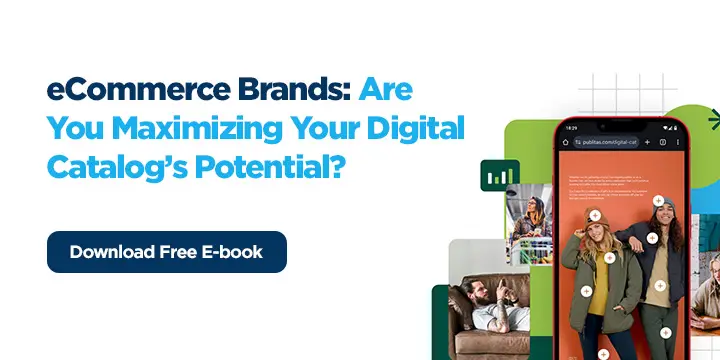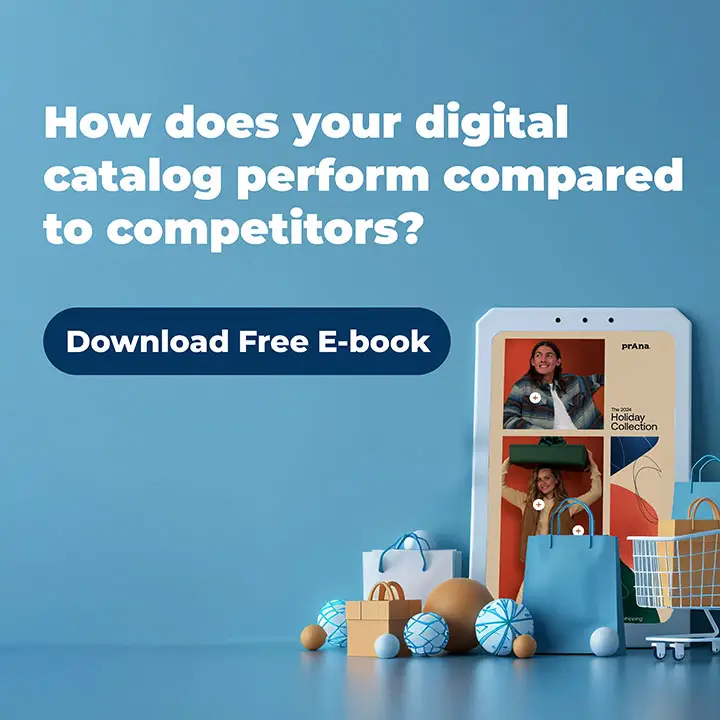Retail has evolved beyond simple transactions; it’s now about building holistic ecosystems that drive sustained value. Traditional metrics like ROI (Return on Investment) and ROAS (Return on Ad Spend) remain relevant, but they can’t capture the full picture of modern retail success, including success metrics like community engagement, long-term loyalty, and brand advocacy. We also know that traditional performance metrics, like Click & Collect, digital catalogs, and AI-powered recommendations, can’t capture the full value of blended retail transactions.
Enter Return on Ecosystem (ROE) – a more nuanced approach that measures the value created through partnerships, customer engagement, and operational efficiencies.
Customers aren’t just looking for brands that sell products; they want their retailers to solve problems. That means creating seamless, personalized, and value-driven experiences rather than isolated transactions. To drive mutual success, successful retailers and suppliers co-invest in shared marketing efforts, co-branded content, and personalized promotions.
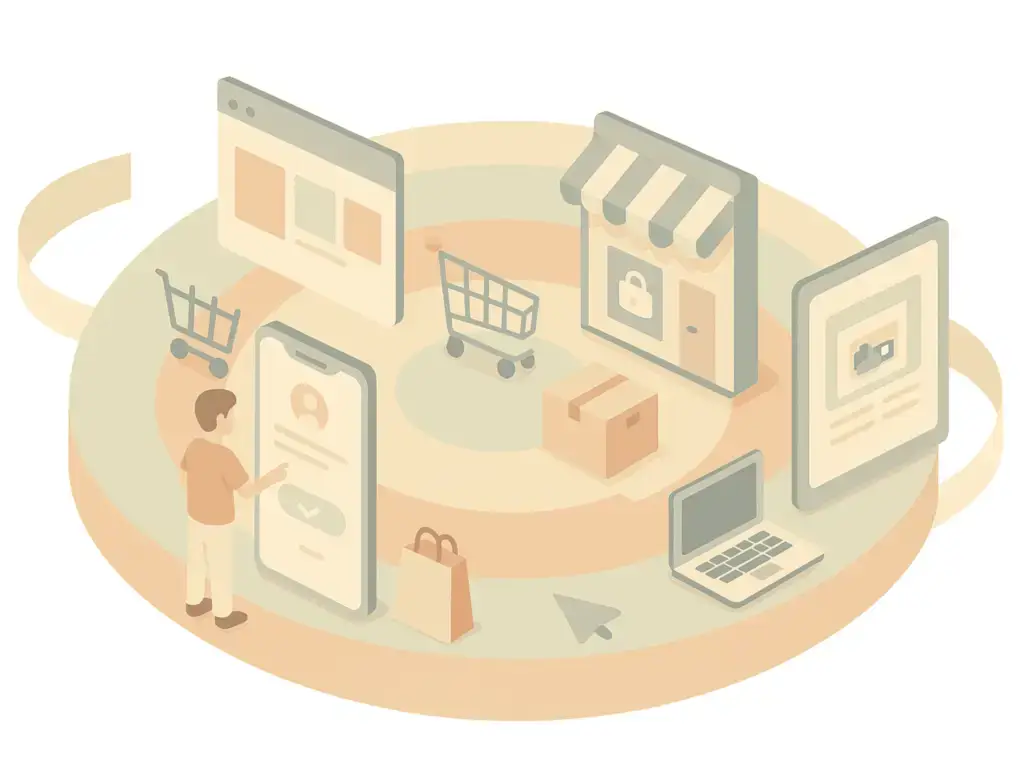
But What Is Return On Ecosystem (ROE)?
“Return on Ecosystem” is still an emerging concept in business and retail strategy. It’s not yet formalized like ROI (Return on Investment) or ROAS (Return on Ad Spend), which have decades of widespread use and standardized calculation methods.
ROE is being talked about more in thought leadership, innovation circles, and strategic consulting, but it hasn’t fully made its way into mainstream frameworks or financial reporting standards. ROE, or Return on Ecosystem, is a retail performance metric that evaluates the interconnected value generated through partnerships, customer engagement, and operational efficiencies rather than just direct financial returns. Unlike ROI or ROAS, which focus on short-term profitability, Return on Ecosystem considers long-term ecosystem sustainability and mutual growth across stakeholders (retailers, suppliers, and consumers).
ROE isn’t just about direct financial gains. It evaluates a retailer’s contribution to a broader ecosystem, considering factors like:
- Sales Growth – Increased transactions through better engagement and cross-channel optimization.
- Customer Retention & Loyalty – Encouraging repeat purchases through personalized experiences.
- Ecosystem Contributions – Generating value for suppliers, partners, and consumers alike.
- Brand Advocacy & Engagement – Encouraging user-generated content, community participation, and shopper feedback.
- Operational Synergy – Streamlining processes and leveraging automation to enhance responsiveness to market changes.
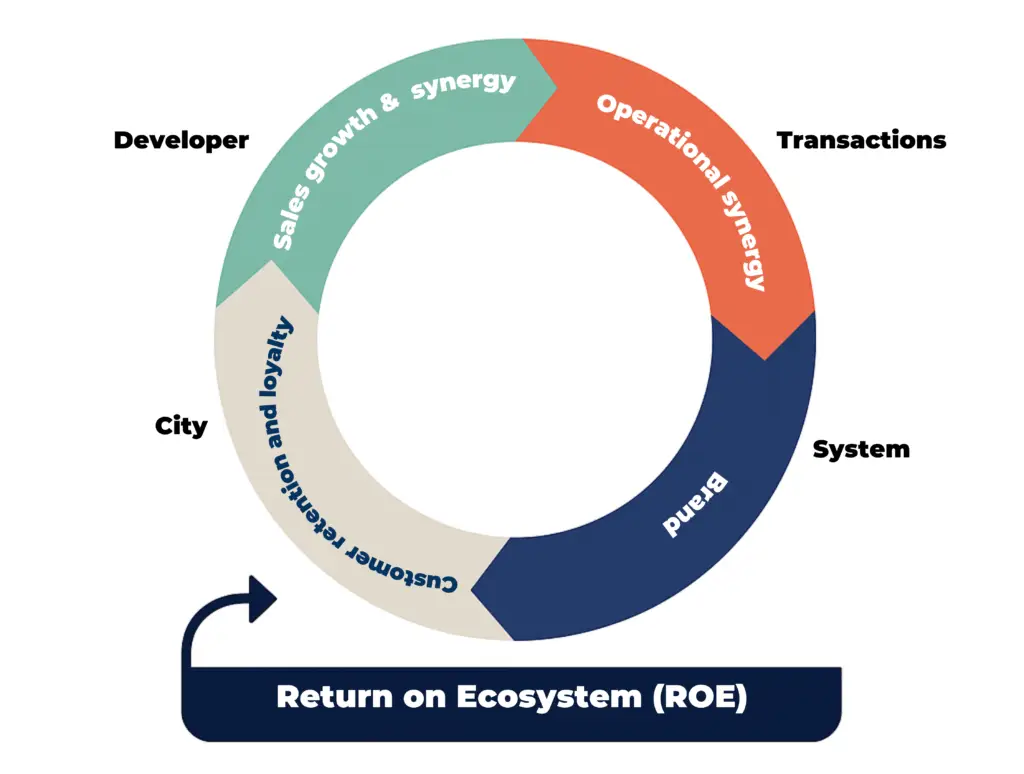
Calculating ROE: The Formula For ROE
Unlike traditional financial metrics, ROE requires a framework that evaluates both tangible and intangible impacts. Some key elements include:
- Customer Lifetime Value (CLV): Tracking long-term revenue generated from retained customers.
- Supplier Collaboration Metrics: Measuring the effectiveness of co-developed campaigns, exclusive products, or promotional partnerships.
- Marketing Efficiency: Evaluating conversion rates from personalized and automated marketing initiatives.
- Engagement & Advocacy: Monitoring social media interactions, reviews, and community participation.
There isn’t a universally established formula for Return on Ecosystem (ROE) yet, but a structured approach can help measure its impact. For example;
ROE = Total Ecosystem Value Generated / Total Investment in Ecosystem
or
(CLV + SupplierContribution + Engagement Impact + Operational Efficiencies) / Ecosystem Investment
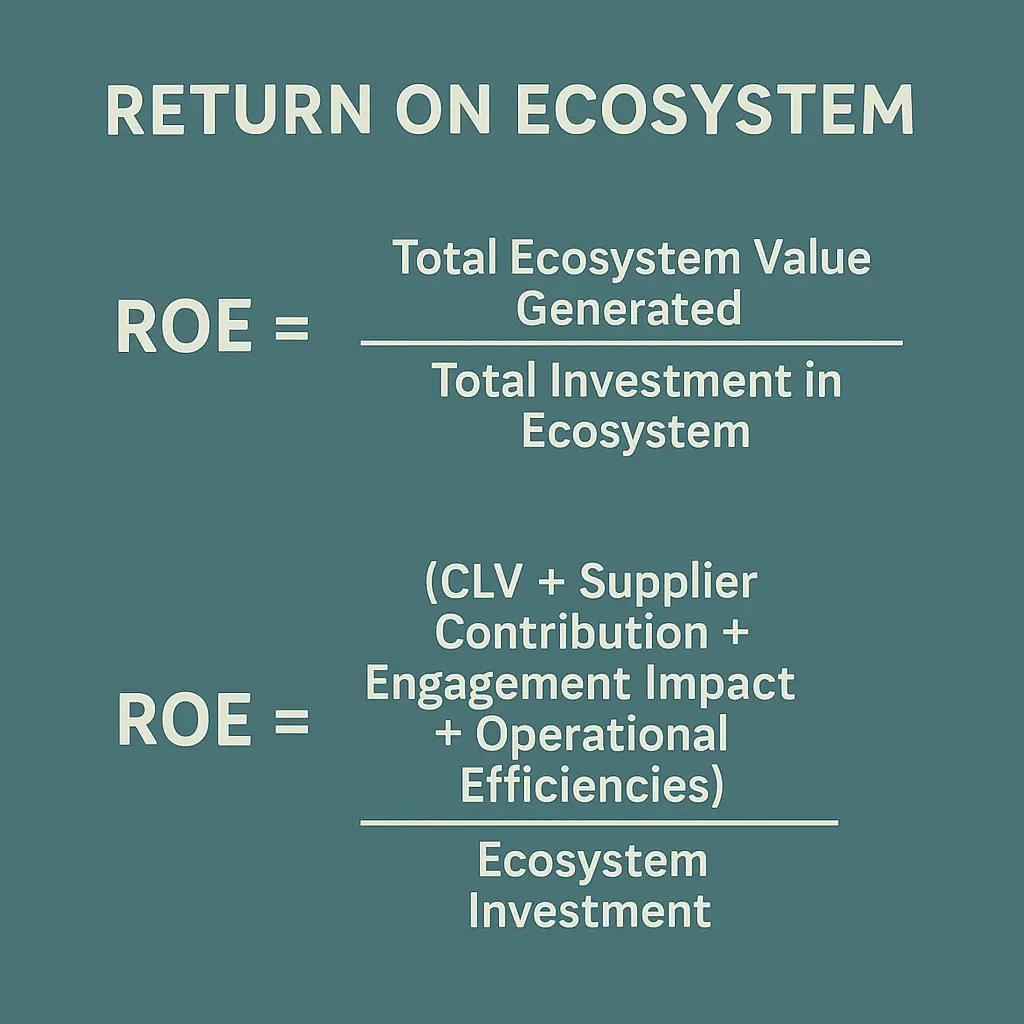
How ROE Is Used In Decision-Making
Retailers and suppliers can use ROE to guide investment decisions, resource allocation, and long-term strategy. By focusing on ecosystem contributions, businesses can ensure:
- Better Supplier-Retailer Alignment: Shared goals drive co-investments in marketing and product development.
- Improved Consumer Experience: A seamless, personalized journey across touchpoints enhances satisfaction.
- Operational Efficiencies: Automation and data-driven insights help retailers stay agile.
We’ve already seen this in practice. In December, German premium beauty retail group Douglas began its transformation into a media powerhouse through its Retail Media Network by leveraging their customer data, website traffic, and digital assets to offer targeted advertising opportunities to beauty brands. This helps brands reach high-intent shoppers while creating a new revenue stream for Douglas beyond just product sales.
The Kroger Boost program is a prime example, designed to extract maximum value from an interconnected network of grocery retail, private-label brands, fuel rewards, delivery logistics, and digital engagement.
Boost ties multiple elements of Kroger’s business together, ensuring that customers remain within its ecosystem:
- Groceries: Encourages higher spend on Kroger’s private-label brands (Simple Truth, Private Selection), which have higher profit margins.
- Fuel Rewards: Boost members are incentivized to use Kroger fuel stations, increasing engagement with Kroger’s gas ecosystem.
- Delivery & E-Commerce: Free delivery keeps customers shopping within Kroger’s online platform, reducing reliance on third-party delivery services.
- Healthcare Integration: Boost offers virtual nutrition consultations, connecting customers to Kroger’s health & wellness services.
This is a powerful play for a number of reasons. Subscription models create habit-forming behaviors. Members are more likely to concentrate their shopping at Kroger to maximize their savings, deepening their engagement with the ecosystem.
We also know that Boost customers are less likely to switch to competitors (Walmart, Amazon Fresh, Target), ensuring long-term revenue streams.
The Boost program also expands the data flywheel. Digital coupons and membership tracking give Kroger first-party data on customer buying habits. More data means better personalization and offers, which means increased spending and greater loyalty. Predictive analytics allow Kroger to anticipate demand, optimize inventory, and improve operational efficiency across the ecosystem. The better the insights, the higher the monetization.
Kroger’s boost isn’t just about saving customers money. It’s about maximizing return on the ecosystem (ROE) by creating a self-reinforcing loop where more engagement leads to more value extraction across groceries, fuel, delivery, private-label brands, and digital services. It’s a closed-loop strategy that turns every customer interaction into a long-term asset.
How Digital Catalogs Support The ROE Trend
Brands like Publitas play a crucial role in enabling retailers to maximize their ROE by transforming digital catalogs into powerful tools for engagement, conversion, and ecosystem-building. Here’s how:
1. Driving Personalized Engagement
Personalization is a cornerstone of ROE, as it fosters deeper connections between brands and consumers. Publitas leverages personalized recommendations, dynamic catalog experiences, and shopper behavior insights to tailor content to individual preferences. This means that customers can follow their interests, exploring the entire retail ecosystem – whether it’s a push to in-store shopping, click-and-collect, or other brands under the same retail umbrellas.
2. Enhancing Omnichannel Synergy
A well-integrated ecosystem spans multiple channels, ensuring a seamless experience from discovery to purchase. Linking digital catalogs with physical store inventory for convenient pickups, ensuring catalogs are accessible and engaging across devices, and allowing customers to seamlessly checkout while browsing supports the natural customer buyer journey and experience.
3. Strengthening Supplier & Retailer Collaboration
Digital catalogs can facilitate ecosystem partnerships by enabling:
- Co-Branded Digital Catalogs: Allowing suppliers to feature their products in a retailer’s ecosystem with rich content and interactive elements.
- Performance Analytics: Providing insights into engagement metrics, click-through rates, and conversion data to fine-tune marketing strategies.
- Exclusive Content & Offers: Helping brands create unique shopping experiences that drive loyalty and differentiation.
4. Amplifying Community & Advocacy
User-generated content and community engagement are vital components of ROE. Digital catalogs help retailers foster advocacy by:
- Integrating Social Proof: Embedding customer reviews and ratings directly into digital catalogs.
- Encouraging Social Sharing: Making it easy for shoppers to share their favorite products on social media.
- Enabling Interactive Feedback: Collecting real-time shopper insights to improve offerings.
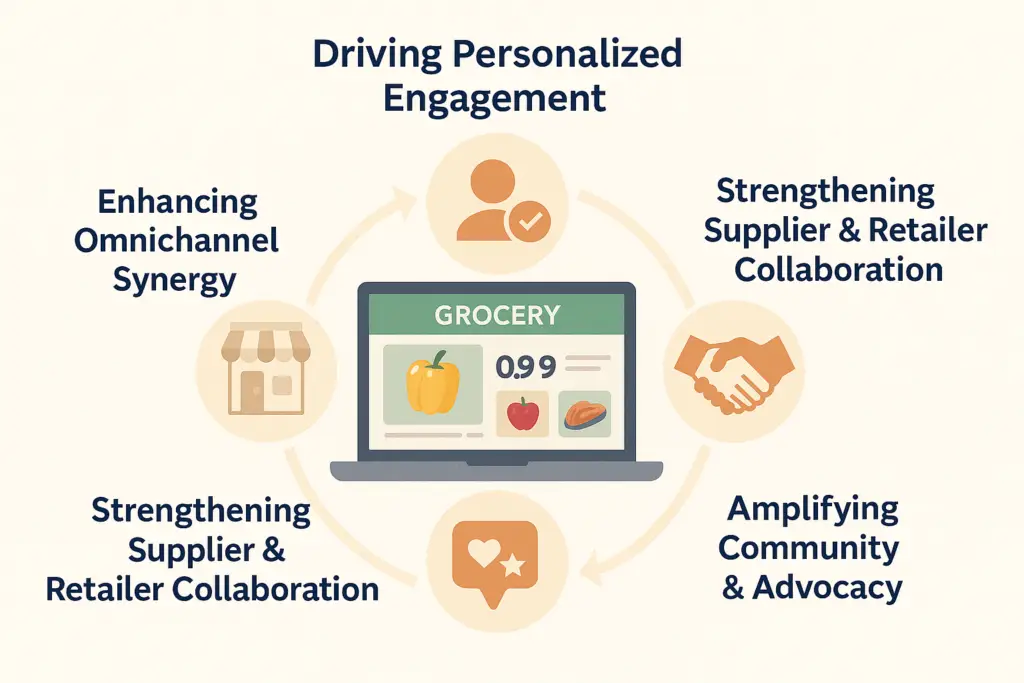
The Competitive Edge Lies in Your Ecosystem
Retailers that prioritize ROE will lead the future of commerce by fostering a connected, engaged, and value-driven ecosystem. Publitas is uniquely positioned to support this shift by empowering retailers with personalization, automation, omnichannel synergy, supplier collaboration, and community engagement. As retailers refine their ecosystem strategies, those leveraging Publitas’ digital catalog solutions will be best equipped to meet modern shopper demands and maximize their Return on Ecosystem.
The road ahead is clear: invest in ROE, embrace innovation, and build a cohesive retail ecosystem that thrives in the digital age.


